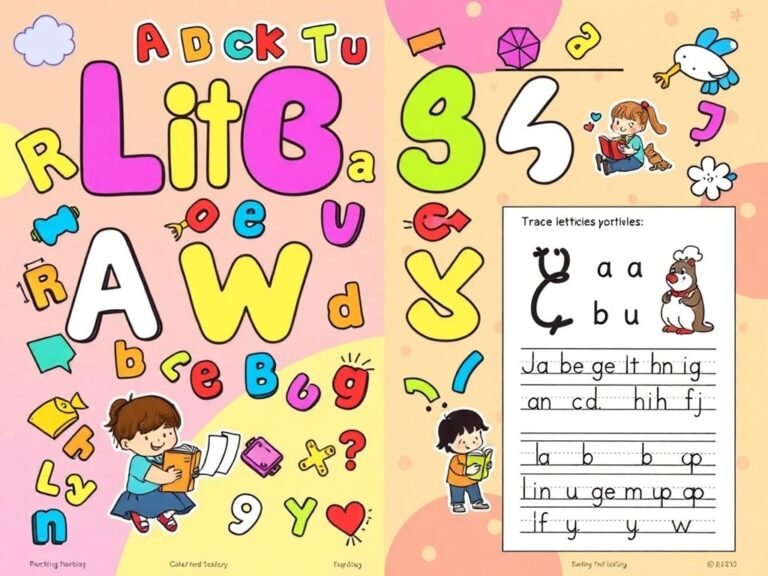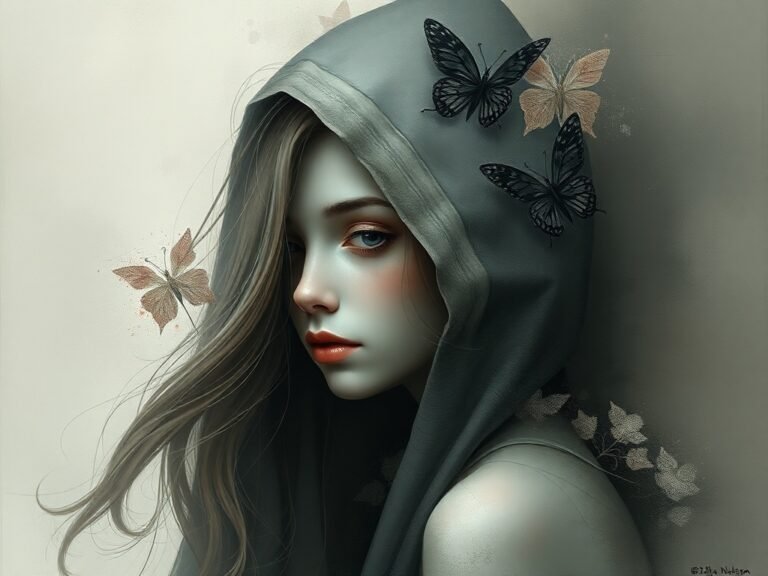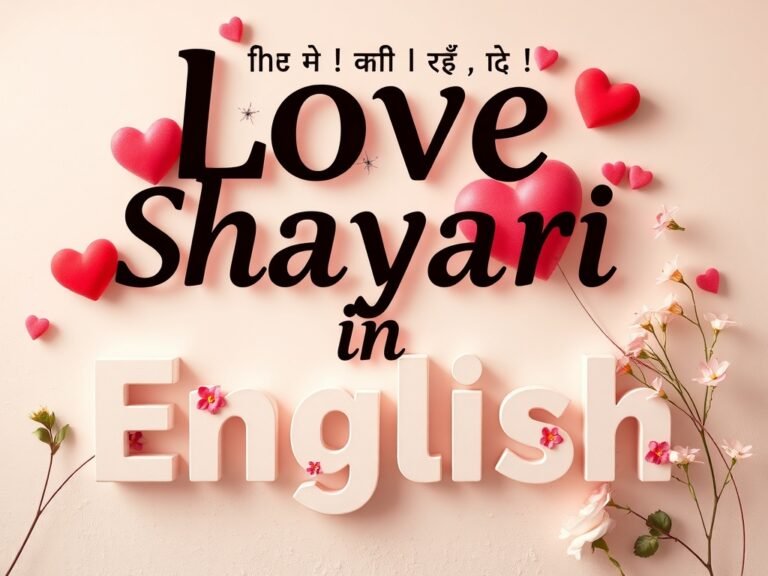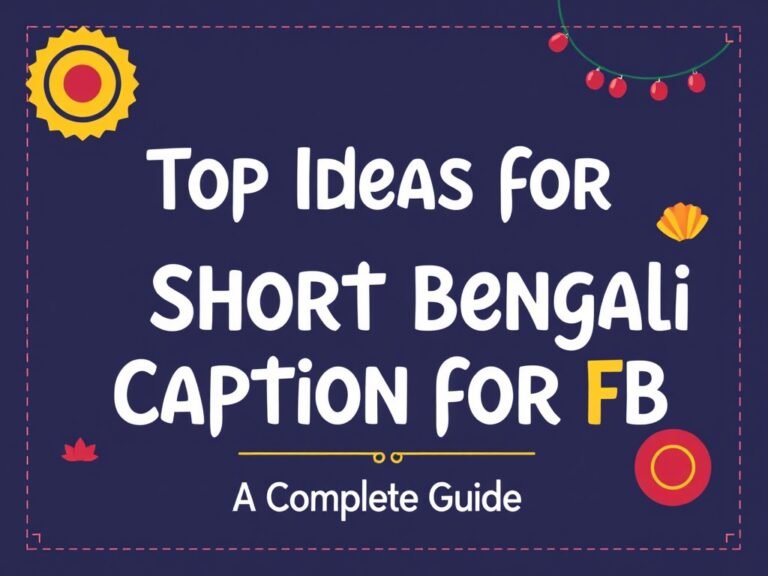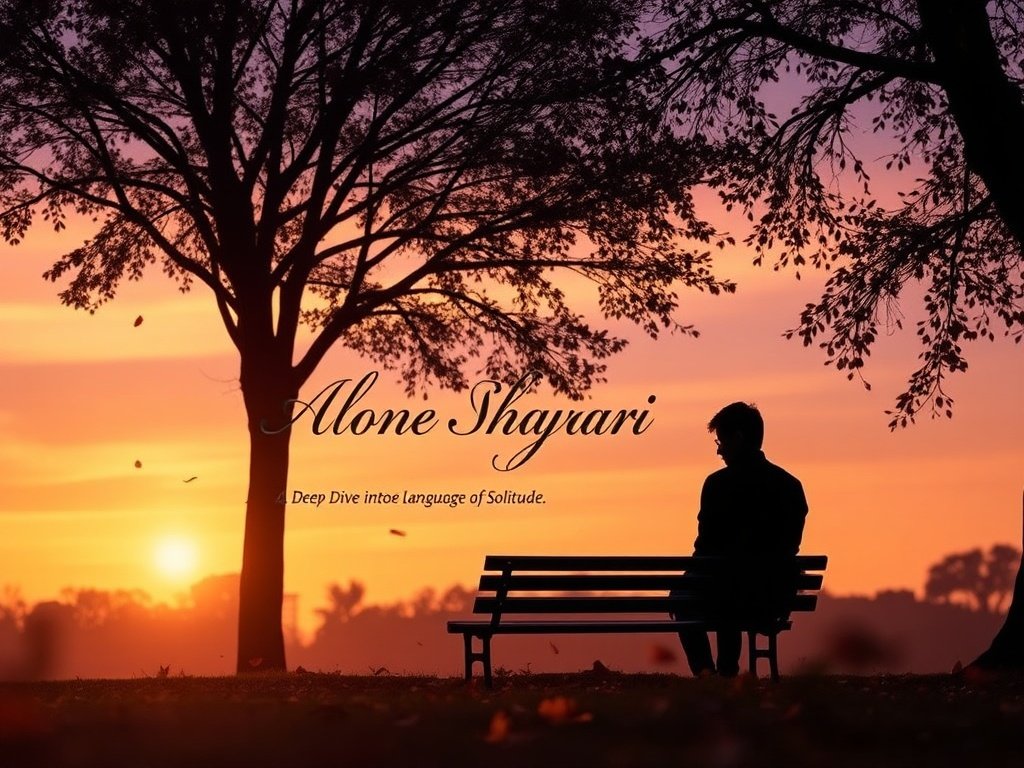
Introduction – The Silent Power of Alone Shayari
Alone Shayari is not just poetry; it is a reflection of unspoken emotions, hidden pain, and the quiet conversations we have with ourselves when no one else is listening. Across centuries, poets from the Indian subcontinent have woven verses that encapsulate solitude — a feeling that is both bitter and strangely comforting. The beauty of Alone Shayari lies in its ability to make loneliness feel poetic, turning tears into words and words into art. Whether written in Urdu, Hindi, or a blend of both, these verses resonate universally because loneliness is a feeling every human has touched at least once. Shayari about being alone doesn’t just describe sadness; it also explores self-discovery, resilience, and the inner strength that emerges when we are left to face life’s challenges without company. In modern times, Alone Shayari has found new life on social media, where Instagram captions and WhatsApp statuses carry centuries-old poetic traditions into the digital age.
Understanding the Essence of Alone Shayari
At its core, Alone Shayari captures the human experience of solitude in words that speak directly to the heart. While loneliness is often seen as negative, shayari gives it depth and dignity. The Urdu language in particular, with its rich vocabulary and soft tones, is uniquely suited to express feelings of separation, longing, and introspection. For example:
“Tanhaai ka yeh safar bhi ajeeb hai,
Dil ke paas hai par koi naseeb nahin.”
(Translation: This journey of loneliness is strange — the heart is close to love, yet fate keeps it away.)
Such verses reveal the two sides of being alone: the pain of absence and the beauty of emotional self-awareness. The cultural roots of Alone Shayari are also deeply tied to Sufi poetry, where solitude is seen as a way to connect with the divine.
Historical Roots – How Alone Shayari Evolved
The tradition of Alone Shayari dates back centuries, with influences from Persian ghazals, Urdu nazms, and Hindi dohas. In Mughal-era India, poets like Mir Taqi Mir and Mirza Ghalib used solitude as a recurring theme in their poetry, not just to describe heartbreak but to discuss existential thoughts. Over time, regional poets adapted these styles, creating unique expressions of loneliness in different dialects. In the pre-independence period, Alone Shayari often reflected themes of separation caused by migration, war, and political upheaval. In the modern age, however, its scope has expanded — now covering personal heartbreaks, mental health struggles, and even motivational reflections on being alone.
Emotional Categories of Alone Shayari
Alone Shayari is not one-dimensional. It can be categorized into different emotional tones:
Heartbreak Alone Shayari
Focuses on the emptiness left after a lost relationship.
Example:
“Woh chhod ke chala gaya, bas yaadein de gaya,
Ab dil ke sheher mein sirf tanhaai rehti hai.”
Motivational Alone Shayari
Turns solitude into strength, encouraging self-growth.
Spiritual Alone Shayari
Explores solitude as a path to connect with God.
Reflective Alone Shayari
Centers on self-discovery and philosophical thoughts.
The Language of Loneliness – Urdu and Hindi Influence
The beauty of Alone Shayari lies in its linguistic charm. Urdu, with words like tanhaai (loneliness), judai (separation), and yaad (memory), creates a melodious rhythm even in pain. Hindi brings simplicity and directness, making the emotions easily relatable. Many poets use a hybrid of both, resulting in verses that feel both literary and familiar.
How Alone Shayari Connects with Modern Audiences
Even in today’s digital culture, Alone Shayari continues to thrive. Platforms like Instagram, Facebook, and YouTube have given it new life. Young people often share short verses as captions, reels, or even in voice-note form. Interestingly, while older generations wrote shayari for literary gatherings (mushairas), modern Alone Shayari often exists in bite-sized formats for instant emotional impact.
Common Themes in Alone Shayari
| Theme | Description | Example Line |
| Heartbreak | Loss of love, separation from a partner | “Ab tum nahin, bas yaadein rehti hain.” |
| Self-reflection | Deep thinking about life and identity | “Main apne sawalon ka jawab khud ban gaya.” |
| Spiritual solitude | Finding peace through God or meditation | “Tanhaai mein bhi tere saath hoon, Ya Allah.” |
| Nostalgia | Remembering the past and old relationships | “Woh bachpan ki galiyan ab sirf yaadon mein hain.” |
Why Alone Shayari Resonates Deeply
There are several reasons Alone Shayari strikes a universal chord:
- Emotional Universality – Everyone has experienced moments of isolation.
- Cultural Familiarity – The poetic tradition is deeply rooted in South Asian culture.
- Language Beauty – Urdu/Hindi blend creates lyrical elegance.
- Timeless Themes – Love, loss, and self-reflection never go out of style.
Famous Poets Who Wrote About Loneliness
Several iconic poets have touched the theme of solitude in their works:
- Mirza Ghalib – Known for complex ghazals about separation and longing.
- Faiz Ahmed Faiz – Used loneliness as a metaphor for political struggles.
- Parveen Shakir – Wrote heartfelt verses from a woman’s perspective.
- Jaun Elia – Expressed loneliness with a touch of rebellious intellect.
Alone Shayari in Social Media Culture
Today, Alone Shayari is not limited to books or live gatherings. Instagram posts with artistic backgrounds, TikTok videos with melancholic music, and Pinterest boards filled with calligraphy have made shayari accessible to millions. Many content creators now specialize in creating aesthetic visuals for Alone Shayari, blending photography with poetry for emotional effect.
The Therapeutic Side of Alone Shayari
Writing or reading Alone Shayari can be a form of emotional release. Psychologists acknowledge that expressing sadness through art can reduce stress and anxiety. When a person reads a verse that matches their emotions, they feel seen and understood — a form of literary companionship in their solitude.
Tips for Writing Your Own Alone Shayari
Step 1 – Feel the Emotion
Write when you are deeply feeling the emotion you wish to express.
Step 2 – Use Simple but Powerful Words
Urdu and Hindi words have emotional depth; pick ones that resonate.
Step 3 – Keep it Relatable
Your audience should be able to connect instantly.
Step 4 – Add Imagery
Paint pictures in the reader’s mind — seasons, rain, moonlight, empty streets.
Conclusion – Alone Shayari as a Mirror of the Soul
Alone Shayari is more than just poetry about loneliness; it is an art form that transforms pain into beauty. It gives words to feelings that are otherwise locked inside the heart. Whether read in old books, recited in mushairas, or shared as a two-line caption online, Alone Shayari continues to bridge the gap between hearts that feel the same kind of emptiness. In a world where everyone is constantly connected, it reminds us that solitude still holds a powerful place in the human journey.
FAQs
Q1: Is Alone Shayari only about sadness?
Not always — it can also be about self-growth, spiritual peace, and self-discovery.
Q2: Which language is best for Alone Shayari?
While Urdu is traditionally favored for its lyrical depth, Hindi and a blend of both are equally effective.
Q3: How can I start writing Alone Shayari?
Begin with your genuine feelings, choose emotionally rich words, and focus on creating a personal connection with your readers.
